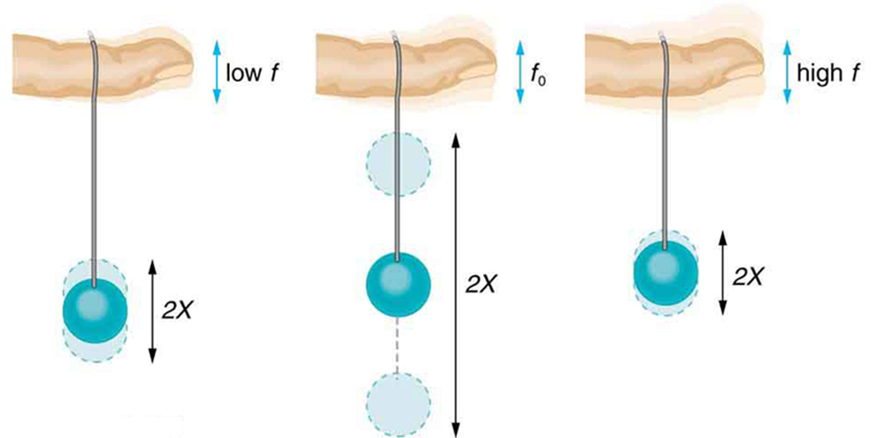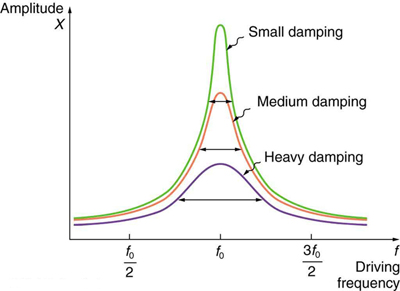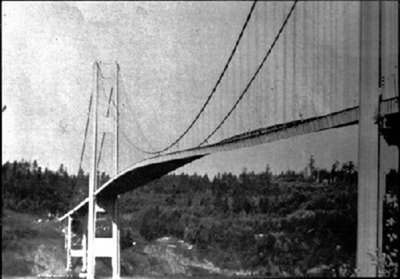Oscillatory Motion and Waves and Physics of Hearing.
123 Forced Oscillations and Resonance
Learning Objectives
- Observe resonance of a paddle ball on a string.
- Observe amplitude behavior in a damped harmonic oscillator.

When you sit in front of a piano and sing a loud, brief note while the dampers are off, the piano may “sing back” that same note. This occurs because the strings that share the same natural frequency as your voice begin to vibrate. This is a compelling example of resonance—a phenomenon that arises when an object is driven at its natural frequency, causing its amplitude to increase significantly.
Now consider a toy like the paddle ball, shown in Figure 123.2. If you gently bounce the ball by moving your finger slowly, the ball follows with minimal motion. However, if you increase the driving frequency and approach the system’s natural frequency, the amplitude of oscillation increases substantially. When the frequency of the input matches the natural frequency, the system enters resonance and the oscillations grow with each cycle.

The graph in Figure 123.3 shows how the amplitude of a damped oscillator varies with the frequency of a periodic driving force. All curves peak at the resonant frequency. Systems with less damping exhibit a sharper and higher peak—meaning greater energy is efficiently transferred into oscillation.

In practical terms, minimal damping yields sharp resonance useful in systems like musical instruments, where precise tuning is essential. Heavily damped systems, like a car’s suspension, suppress large oscillations and respond more broadly across driving frequencies.
This principle has wide applications. Radios resonate at the frequency of a selected station. MRI machines resonate with atomic nuclei to create diagnostic images. Even biological systems like the chest cavity operate at resonant frequencies—your diaphragm and chest wall act as a driven oscillator tuned for efficient airflow during breathing.
But resonance isn’t always desirable. In Figure 123.4, the Tacoma Narrows Bridge collapsed due to wind-induced resonance. Similarly, the Millennium Bridge in London briefly closed to resolve pedestrian-induced oscillations. These cases highlight the potential dangers when systems resonate without proper damping.

Check Your Understanding
Question: A famous magic trick involves a performer singing a note that causes a crystal glass to shatter. How does this work?
Answer: The trick works by matching the note to the natural frequency of the glass. The sound wave causes the glass to resonate, increasing oscillation amplitude until the structural integrity fails and it shatters.
Section Summary
- A system’s natural frequency is the frequency at which it oscillates when free of external driving or damping forces.
- A periodic driving force tuned to the system’s natural frequency produces resonance, leading to large-amplitude oscillations.
- Lower damping results in sharper and higher resonance peaks; higher damping reduces peak amplitude but increases the range of effective driving frequencies.
Conceptual Questions
- Why are soldiers in general ordered to “route step” (walk out of step) across a bridge?
Problems & Exercises
- How much energy must the shock absorbers of a 1200-kg car dissipate in order to damp a bounce that initially has a velocity of 0.800 m/s at the equilibrium position? Assume the car returns to its original vertical position.
- If a car has a suspension system with a force constant of [latex]5\text{.}\text{00}×{\text{10}}^{4}\phantom{\rule{0.25em}{0ex}}\text{N/m}[/latex], how much energy must the car’s shocks remove to dampen an oscillation starting with a maximum displacement of 0.0750 m?
- (a) How much will a spring that has a force constant of 40.0 N/m be stretched by an object with a mass of 0.500 kg when hung motionless from the spring? (b) Calculate the decrease in gravitational potential energy of the 0.500-kg object when it descends this distance. (c) Part of this gravitational energy goes into the spring. Calculate the energy stored in the spring by this stretch, and compare it with the gravitational potential energy. Explain where the rest of the energy might go.
- Suppose you have a 0.750-kg object on a horizontal surface connected to a spring that has a force constant of 150 N/m. There is simple friction between the object and surface with a static coefficient of friction [latex]{\mu }_{\text{s}}=0\text{.}\text{100}[/latex]. (a) How far can the spring be stretched without moving the mass? (b) If the object is set into oscillation with an amplitude twice the distance found in part (a), and the kinetic coefficient of friction is [latex]{\mu }_{\text{k}}=0\text{.}\text{0850}[/latex], what total distance does it travel before stopping? Assume it starts at the maximum amplitude.
- Engineering Application: A suspension bridge oscillates with an effective force constant of [latex]1\text{.}\text{00}×{\text{10}}^{8}\phantom{\rule{0.25em}{0ex}}\text{N/m}[/latex]. (a) How much energy is needed to make it oscillate with an amplitude of 0.100 m? (b) If soldiers march across the bridge with a cadence equal to the bridge’s natural frequency and impart [latex]1\text{.}\text{00}×{\text{10}}^{4}\phantom{\rule{0.25em}{0ex}}\text{J}[/latex] of energy each second, how long does it take for the bridge’s oscillations to go from 0.100 m to 0.500 m amplitude?
Glossary
- natural frequency
- the frequency at which a system would oscillate if there were no driving and no damping forces
- resonance
- the phenomenon of driving a system with a frequency equal to the system’s natural frequency
- resonate
- a system being driven at its natural frequency
- MRI
- (Magnetic Resonance Imaging) – A noninvasive medical imaging technique that uses strong magnetic fields and radio waves to produce detailed images of the internal structures of the body. MRI is particularly effective for visualizing soft tissues, such as the brain, muscles, and organs, without using ionizing radiation.
the frequency at which a system would oscillate if there were no driving and no damping forces
The gradual loss of amplitude in an oscillating system due to energy being dissipated, typically as heat, sound, or other forms of energy. Damping reduces the system’s motion over time and can be caused by friction, air resistance, or internal material resistance.
a system being driven at its natural frequency
(Magnetic Resonance Imaging) – A noninvasive medical imaging technique that uses strong magnetic fields and radio waves to produce detailed images of the internal structures of the body. MRI is particularly effective for visualizing soft tissues, such as the brain, muscles, and organs, without using ionizing radiation.
the phenomenon of driving a system with a frequency equal to the system's natural frequency

